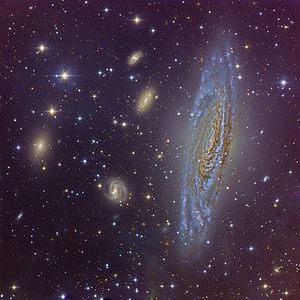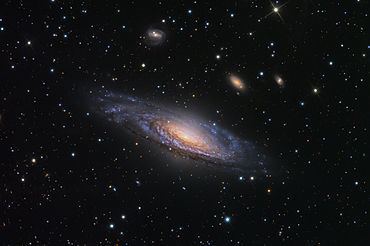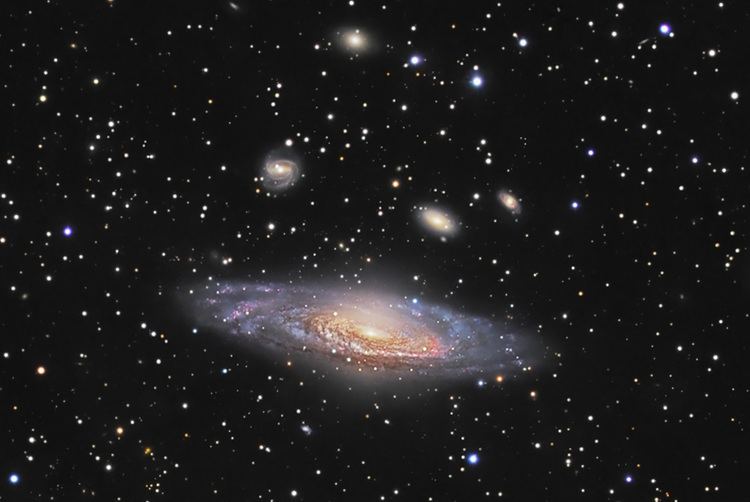Right ascension 22 37 04.1 Redshift 816 ± 1 km/s Apparent size (V) 10′.5 × 3′.7 Magnitude 10.4 Apparent magnitude (V) 10.4 | Declination +34° 24′ 56″ Type SA(s)b Apparent mass ~1,400 billion M☉ | |
 | ||
Distance 40 ± 3 e6ly (12.2 ± 1.0 Mpc) Similar NGC 891, NGC 6946, NGC 7479, NGC 4565, NGC 2403 | ||
Ecvar 5 ngc 7331 stephan s quintet and m15 taken with mallincam jr pro
NGC 7331 (also known as Caldwell 30) is a unbarred spiral galaxy about 40 million light-years (12 Mpc) away in the constellation Pegasus. It was discovered by William Herschel in 1784. NGC 7331 is the brightest member of the NGC 7331 Group of galaxies. The other members of the group are the lenticular or unbarred spirals NGC 7335 and 7336, the barred spiral galaxy NGC 7337 and the elliptical galaxy NGC 7340. These galaxies lie at distances of approximately 332, 365, 348 and 294 million light years, respectively. In both visible light and infrared photos of the NGC 7331, the core of the galaxy appears to be slightly off-center, with one side of the disk appearing to extend further away from the core than the opposite side.
Contents
- Ecvar 5 ngc 7331 stephan s quintet and m15 taken with mallincam jr pro
- Retrograde bulge
- Supernova
- References

The galaxy is similar in size and structure to the Milky Way, and is often referred to as "the Milky Way's twin". However, discoveries in the 2000s regarding the structure of the Milky Way may call this similarity into doubt, particularly because the latter is now believed to be a barred spiral, compared to the unbarred status of NGC 7331.

Retrograde bulge

In spiral galaxies the central bulge typically co-rotates with the disk but the bulge in the galaxy NGC 7331 is rotating in the opposite direction to the rest of the disk.
Supernova

SN 1959D, a Type IIL supernova, was the first supernova identified within NGC 7331. The supernova was discovered by Milton Humason and H. S. Gates in a survey at Palomar Observatory.
More recent supernovae are SN 2013bu and SN 2014C that latter of which underwent an interesting "metamorphosis".
